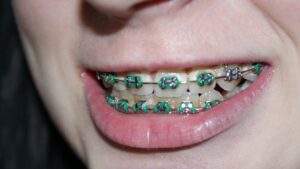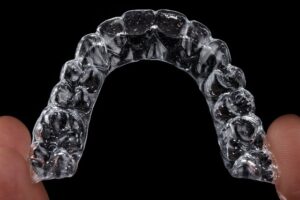We all know how annoying and uncomfortable it can be to have crooked teeth. Not only can they make you feel self-conscious about your natural smile, but they can also lead to problems with your oral health. That’s why many people choose to straighten their teeth with braces or Invisalign. Braces, the traditional option, have been around for decades and are still popular. However, if you’re looking for Invisalign Coventry, you’ll get a newer alternative. But there is more than just being a newer option. So, how do you choose between the two? You’re in for a treat, as we’ve got you covered with everything you need to know about braces and Invisalign.
Visibility
 When it comes to visibility, braces, and Invisalign take very different approaches. Traditional metal braces are highly visible, with brackets and wires that can draw attention to your mouth. This might be a concern for some, especially adults in professional settings or teens who want to avoid unwanted stares. On the flip side, Invisalign offers a more discreet solution. The clear, transparent aligners are nearly invisible when worn, making them a perfect and attractive option for those seeking subtlety.
When it comes to visibility, braces, and Invisalign take very different approaches. Traditional metal braces are highly visible, with brackets and wires that can draw attention to your mouth. This might be a concern for some, especially adults in professional settings or teens who want to avoid unwanted stares. On the flip side, Invisalign offers a more discreet solution. The clear, transparent aligners are nearly invisible when worn, making them a perfect and attractive option for those seeking subtlety.
Comfort
Comfort plays a significant role when deciding between braces and Invisalign. Traditional metal braces can feel bulky and rough against your gums and cheeks. The brackets may often cause mild to acute irritation, especially in the initial weeks of treatment. Invisalign, on the other hand, offers a smoother experience. The clear aligners are made from soft plastic that minimizes discomfort. They fit snugly over your teeth without sharp edges poking at your mouth. However, you should know that some people find any type of orthodontic device uncomfortable initially. The pressure from both options can lead to soreness as teeth shift into position.
Treatment Duration
Moreover, changing aligners every two weeks with Invisalign allows for gradual adjustments in comfort levels. With traditional braces, you might need periodic tightening sessions that can amplify discomfort temporarily. Aside from that, traditional braces often require a longer commitment, typically spanning 18 months to three years. The wires and brackets gradually shift teeth into place but can be less predictable in timing. What about Invisalign? These transparent aligners offer quicker results in many cases. Patients usually wear aligners for about 12 to 18 months. This option allows you to see progress more rapidly thanks to advanced technology. Still, age, complexity of misalignment, and other factors should be considered.
Food Restrictions
 As you know, eating can be another different, often painful story when you wear most teeth aligners. When it comes to braces, certain foods are off-limits. Think hard candies, popcorn, and sticky treats. These can damage brackets or get stuck in wires. With Invisalign, you can expect a different story. Because Invisalign is removable, you just need to remove the aligners when chewing that delicious brisket and any other foods you love. In fact, you’ll also have the freedom to drink anything other than water.
As you know, eating can be another different, often painful story when you wear most teeth aligners. When it comes to braces, certain foods are off-limits. Think hard candies, popcorn, and sticky treats. These can damage brackets or get stuck in wires. With Invisalign, you can expect a different story. Because Invisalign is removable, you just need to remove the aligners when chewing that delicious brisket and any other foods you love. In fact, you’ll also have the freedom to drink anything other than water.
However, keep in mind that while Invisalign offers freedom during meals, you must wear them for 20-22 hours daily for effective treatment. So once you’re done feasting on your favorites, don’t forget to pop those aligners back in.
Wrapping Up: Which Option Suits Your Lifestyle the Best
Each option has its merits based on what matters most to you: whether it’s aesthetics during treatment timeframes or ease of maintenance throughout the day. Take stock of what aspects resonate best with your needs and lifestyle before making this important decision for your smile transformation journey.
